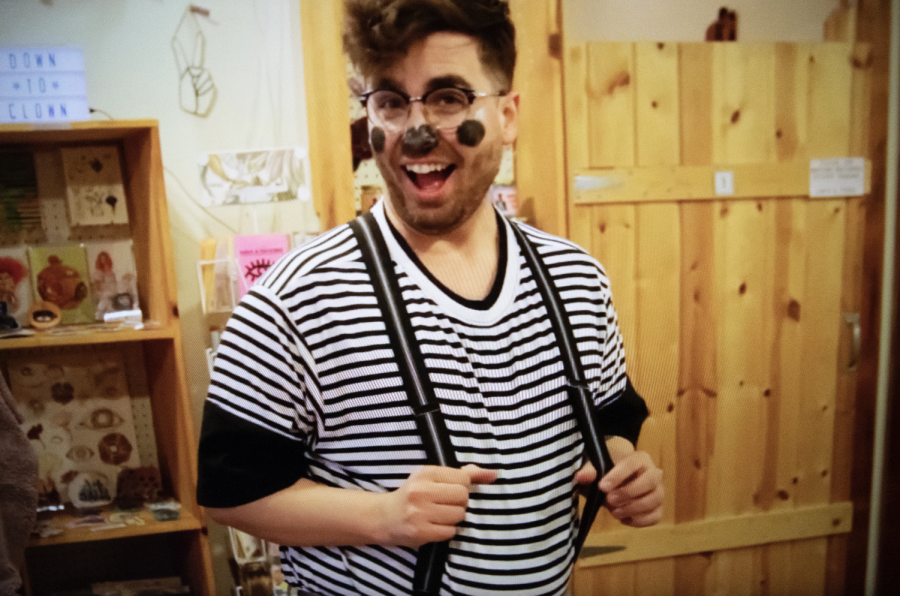Clowning around: art behind the red nose
An art exhibition at White Rabbit explored clowns and masks people hide behind.
An attendee poses for a photo at White Rabbit on Friday, February 22, 2018.
March 4, 2019
For a few hours, local store White Rabbit seemingly transformed into a scene from Fear and Loathing in Las Vegas. With wine flowing liberally and patrons walking around in clown noses and ill-fitting suspenders, something seemed amiss. Upon further investigation, it was no fever dream — it was a clown-theme art gallery.
The gallery, which was titled “Down to Clown” and was curated by artist Nichole Schappert, may cause some to laugh and others to cower with fear. But below the surface, the Iowa-City-based painter’s work delves into the dichotomy of feelings toward a given subject, she said.
“Each person has taken the theme of clowns and run with it in their own way,” she said. “It’s not the whole idea of ‘scary clowns’ but the exploration of what it means to them.”
Looking at a historical context, Schappert said, people can look to Japanese, African, and even French art for humorous, “clown-like” figures. Although many may associate clowns with movies like it today, she said, every culture is trying to “evoke a different spirit” with clown-like characters.
“When I was a child, I collected these masks that are similar to Japanese porcelain masks, and that got me into the idea of hidden identities,” she said. “I’ve been fascinated with what we hide behind and who we show to the world, which has led to further research and my most recent work.”
Schappert conducts research on public perception and knowledge of narcissism and sociopathy, which she said leads to a better understanding of the human condition. To Schappert, “art is a social practice.”
After traveling from New York City to Europe, Schappert took up residence in Iowa City to build her portfolio for M.F.A. programs. Even though she enjoyed her time in New York and abroad, she said, there is something different about the artistic atmosphere in Iowa.
“I don’t think artists are allowed to participate as much as they should in other places,” she said. “We’re really yearning to connect with society through our artwork, and whether that be through realism or abstraction, I don’t think there are enough opportunities for artists to showcase their work.”
Despite any qualms, Schappert said, these adventures helped her gain a deeper understanding of the human condition — and equally important — clown-like figures.
“I was in New York City on a train platform and began talking to a woman from Jamaica,” she said. “When you just start talking and open up that dialogue, you can understand how we’re all so similar but come from so many backgrounds. There is such humanity to be had when you travel, and it is so important for people to get out of their comfort zones.”
Schappert said she hopes to continue sharing her art with everyone; even those who aren’t necessarily “down to clown.”



